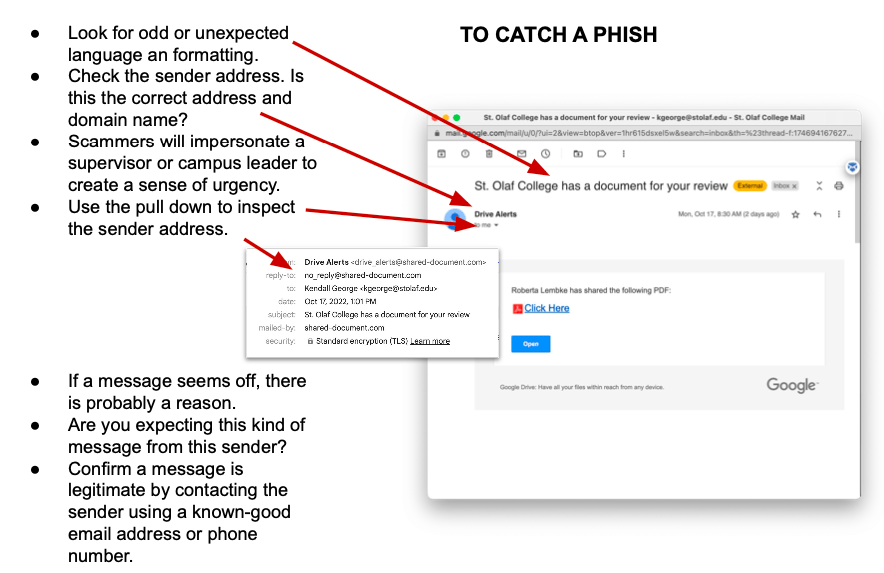I love working in higher education, mostly because I love learning. Every challenge is an opportunity to learn and grow. I was thinking recently about the ways in which introducing new technologies is a learning challenge.
Teachers at every level use feedback to help their students make adjustments in their understanding and their approach to the material. Opportunities to check one’s comprehension and gain feedback and guidance is a core part of learning theory.
Those same steps are an important part of learning how to use technology, although we don’t often apply the same consciousness and appreciation for that learning. Giving and receiving feedback will be essential for us to survive and thrive through the move to Workday.
Lessons from Cybersecurity Training
Let’s reflect for a minute on the way feedback worked with the recent cybersecurity training. ITS heard comments about particular questions that were unclear or misaligned with Carleton practices and that the window for doing the training extended too far into the term. We learned that the reminder emails (sent from the training software) were overlooked due to the sorting that Google provides. We also heard that the importance to Carleton of doing training wasn’t well understood. We have debriefed on this feedback and have plans for how to make adjustments for next year.
We also heard that the phishing simulation was difficult and that it was uncomfortable. I have resisted conducting phishing simulations for years, because I know it can feel like a “gotcha”. All of us in ITS are partners in supporting Carleton’s academic mission, and a “gotcha” is a terrible way to learn. It is a blunt object, but it is indeed a conduit for learning. There is a ton of data and analysis about the value of phishing simulation as a mode of feedback. It is a way to learn what to look out for and how to avoid falling for the ever evolving attempts to breach our protections. I may not like it, but phishing simulation is an accepted practice and it’s a practice that insurance companies have started to demand. I hope that thinking of it as a form of feedback and a tool for learning will be a useful way to reframe it for all of us.
Feedback and Learning Workday
As we prepare for the move to Workday, this is another opportunity to think about our learning process. I’d like to encourage two things: 1) that all of us give ourselves room to recognize that our learning won’t be a straight line and that it takes time and feedback to learn new practices, and 2) that you offer feedback to the functional and technical leaders about how to improve the process.
The SEAMS team has put a lot of resources together to help all of us learn how to do HR and Finance functions in Workday. Those are available on the project website and will be explored together at the Staff Retreat on December 19th. That event and other guided sessions will be great opportunities to learn and practice, while gaining real-time feedback.
As you use the new environment, please feel free to submit feedback on the SEAMS website or send feedback to: seams-planning-group@carleton.edu.
As much as I love learning, it’s also true that I wouldn’t choose to have to learn new ways to manage the ITS budget, hiring, etc. Please know that our nearly 30-year-old software (Colleague / HUB) has significant challenges for functional departments (like HR), and that Workday will offer much better tools, including a mobile app.
According to our peer schools, we can expect to be uncomfortable with, and adapting to, our environment for the next few years. Your feedback and patience will be very helpful as we move through the next phase of this journey.
